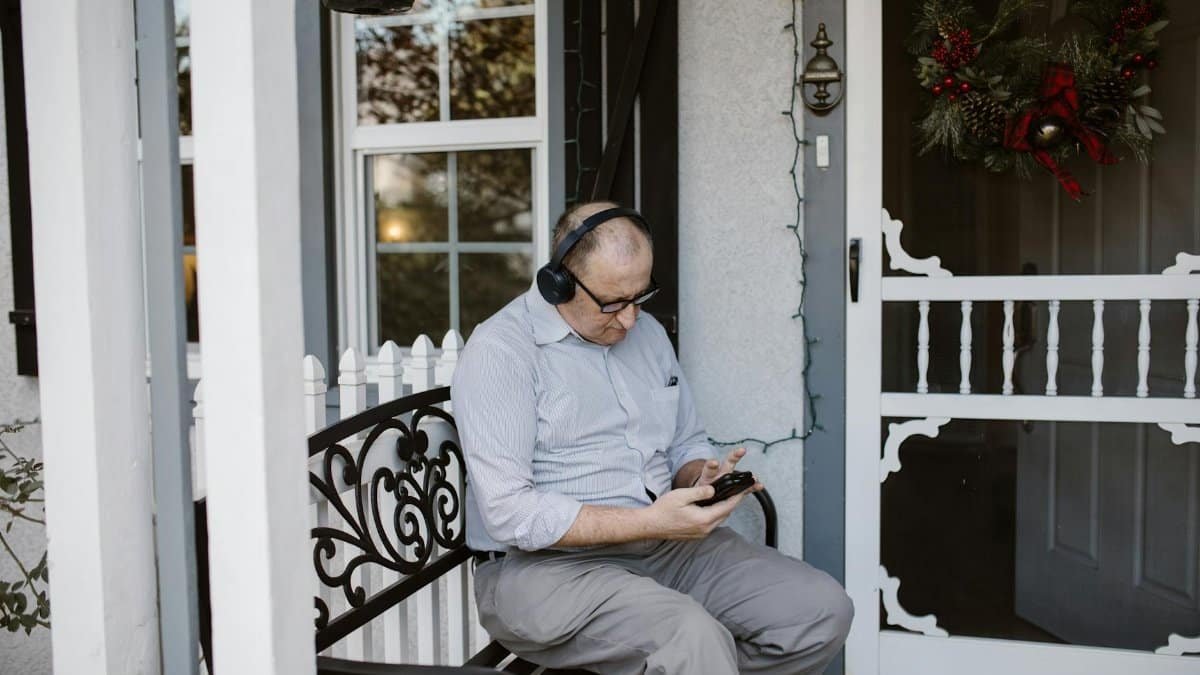Sometimes calm sneaks up like a slow blooming flower in a bustling garden. You expect fireworks or instant relief, but instead, it arrives as a subtle shift, a quiet unfolding that demands patience. Think of calm growth as the roots extending underground, invisible yet vital, strengthening the whole plant against storms. In our high speed world, this process often feels counterintuitive, even uncomfortable at first. It challenges the rush we are accustomed to, forcing a confrontation with inner turbulence we have long ignored. Yet, as more Americans seek ways to navigate stress in 2025, embracing this gradual expansion of inner peace reveals its true power. Far from passive stillness, calm growth builds resilience, fostering a deeper sense of security in one’s own skin.
The Roots of Discomfort in Seeking Calm

Discomfort often emerges when people first dip into practices aimed at cultivating inner peace. It is not uncommon for beginners to feel a surge of restlessness, as if the mind rebels against the unfamiliar quiet. This reaction stems from years of conditioning in a culture that prizes constant activity. A study from the American Psychological Association highlights how chronic stress affects nearly 80 percent of adults, wiring brains for perpetual alertness. American Psychological Association Stress Report notes that economic pressures and global uncertainties amplify this state, making stillness feel like a threat rather than a refuge.
Consider a middle aged professional in Chicago, juggling deadlines and family demands. She decides to try meditation, only to find her thoughts racing louder in the silence. This initial unease is part of the process, a sign that old patterns are being disrupted. Experts suggest viewing it as a detox, where suppressed emotions bubble up before settling. Over time, this discomfort fades, paving the way for genuine calm growth.
Yet, not everyone experiences it the same way. Some report a subtle anxiety, like standing on the edge of a cliff, peering into uncharted emotional territory. This varies by background; those from high pressure environments might resist more fiercely. The key lies in persistence, allowing the discomfort to teach rather than deter.
Unpacking the Myth of Instant Serenity

Popular media often paints calm as an overnight transformation, a quick fix via apps or retreats. But reality tells a different story. True calm growth unfolds gradually, much like muscle building through consistent effort. Rushing it can lead to frustration, reinforcing the myth that peace should come easily.
One anonymous account shared publicly online described starting a mindfulness routine amid burnout: “At first, it felt like stirring up mud in a clear pond. Everything got murky before it cleared.” This sentiment echoes broader trends, where impatience derails progress. Research from Harvard Medical School underscores that sustained practice rewires neural pathways, but it requires weeks or months. Harvard Medical School Mindfulness Research details how consistent meditation reduces amygdala activity, the brain’s fear center, leading to lasting calm.
Shifting expectations helps. Instead of seeking bliss right away, focus on small wins, like noticing a breath without judgment. This approach demystifies the process, making it accessible for everyday Americans facing midlife stresses.
How Societal Pressures Amplify the Unease

In a nation driven by productivity, pausing for calm can feel like rebellion. Work cultures glorify hustle, leaving little room for introspection. This societal backdrop intensifies the initial discomfort of calm growth, as individuals grapple with guilt over “doing nothing.”
Take the case of a teacher in Texas, overwhelmed by classroom demands and administrative burdens. When she carves out time for quiet reflection, doubts creep in: Is this selfish? Data from the Pew Research Center shows that 60 percent of U.S. adults feel too busy to enjoy life, fueling this internal conflict. Pew Research Center on American Time Use reveals how packed schedules erode mental space, making calm pursuits seem indulgent.
Breaking this cycle involves reframing calm as essential maintenance, not luxury. Communities forming around wellness in cities like Seattle demonstrate how shared experiences normalize the unease, turning it into a collective journey toward growth.
Moreover, economic inequalities play a role. Those with fewer resources might find calm practices harder to access, adding layers of frustration. Addressing these barriers through affordable programs could broaden the path to calm growth.
Building Resilience Through Gradual Exposure

Embracing discomfort builds emotional muscle. Start small: a five minute breathing exercise amid daily chaos. Over weeks, this exposure desensitizes the mind to stillness, fostering calm growth without overwhelm.
A narrative from a veteran in Virginia illustrates this. Returning from service, he found solace in nature walks, initially triggering flashbacks. Persistence transformed these outings into anchors of peace. Studies from the National Institutes of Health support this, showing gradual exposure therapies enhance resilience. NIMH on PTSD and Resilience explains how controlled discomfort rewires responses, applicable to everyday stress.
Vary the methods. Journaling uncovers hidden tensions, while yoga integrates body and mind. Each step reinforces that discomfort is temporary, a gateway to deeper calm. In 2025, with rising mental health awareness, such strategies gain traction among middle aged groups seeking sustainable well being.
The Role of Self Compassion in Navigating Discomfort

Self compassion acts as a balm during the rocky start of calm growth. Treating oneself kindly amid unease prevents self sabotage. It is about acknowledging struggles without judgment, a skill many overlook.
Imagine a parent in New York, exhausted from remote work and childcare. Her first attempts at calm practices falter, sparking self criticism. Shifting to compassion, she whispers affirmations, easing the path. Research from the University of California, Berkeley, links self compassion to lower stress levels. Greater Good Science Center on Self-Compassion provides evidence that this mindset accelerates emotional healing.
Practical tools include guided meditations focused on kindness. Over time, this nurtures a safer internal space, where calm can truly root and expand.
Challenges arise when past traumas surface. Here, professional guidance ensures compassionate navigation, turning potential setbacks into growth opportunities.
Real Life Transformations and Long Term Benefits

Stories of transformation abound once the initial barrier is crossed. Calm growth leads to sharper focus, better relationships, and renewed energy. It reshapes lives quietly but profoundly.
One executive in California recalls: “The discomfort was like shedding old skin. Now, decisions come clearer, without the noise.” Longitudinal studies from the CDC affirm these benefits, with mindfulness linked to reduced chronic disease risks. CDC on Mindfulness and Health highlights how such practices lower blood pressure and improve sleep.
Beyond individuals, communities thrive. Workplace programs incorporating calm techniques report higher satisfaction. As 2025 unfolds, expect more integration into education and healthcare, amplifying these gains.
Overcoming Common Pitfalls on the Path

Pitfalls like inconsistency or unrealistic goals can derail calm growth. Address them by setting flexible routines and celebrating progress.
A common trap is all or nothing thinking. Miss a day, and motivation plummets. Counter this with habit stacking, linking calm practices to existing rituals. Insights from Stanford’s behavior lab emphasize small, sustainable changes. Stanford Behavior Design Lab offers frameworks for lasting habits.
External distractions, from social media to news cycles, also intrude. Creating boundaries, like designated quiet zones, helps. Persistence through these hurdles ensures the discomfort evolves into empowerment.
Embracing Calm Growth in Everyday Life

Integrating calm growth into daily routines makes it stick. Simple acts, like mindful eating or evening reflections, weave peace into the fabric of life.
Reflect on a retiree in Florida who turned gardening into a meditative ritual. What began as uneasy quiet became a source of joy. Broader data from Gallup shows rising interest in wellness among older adults. Gallup Workplace Well-Being Report ties such habits to enhanced life satisfaction.
Adapt to personal contexts. For busy parents, micro moments count. In essence, calm growth is not about perfection but presence, transforming discomfort into a lifelong ally.
When to Seek Professional Support

Sometimes, discomfort signals deeper issues needing expert help. Therapy complements calm practices, especially for anxiety or depression.
Recognize signs like persistent overwhelm. Resources from the Substance Abuse and Mental Health Services Administration guide access. SAMHSA National Helpline connects individuals to support, ensuring safe progression in calm growth.
Combining modalities, like CBT with mindfulness, yields robust results. This holistic approach empowers many to embrace true calm without isolation.
The Broader Cultural Shift Toward Acceptance

America is witnessing a cultural pivot toward valuing calm. From corporate wellness to public policy, recognition grows that inner peace fuels societal health.
Influencers and books popularize the concept, normalizing initial unease. A report from the World Health Organization projects mental health’s rising priority. WHO Mental Health Overview underscores global trends mirroring U.S. shifts.
This evolution invites more to explore calm growth, turning personal discomfort into collective progress. As we move through 2025, the conversation deepens, promising a calmer future.
